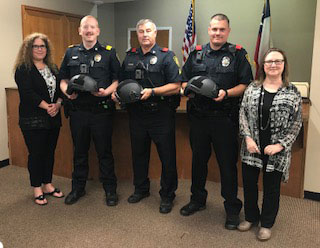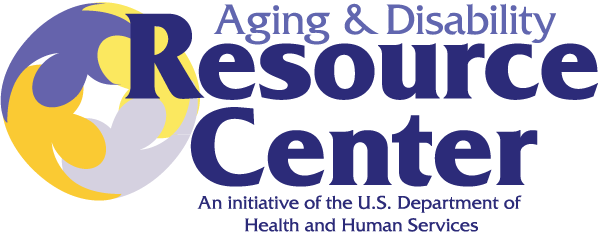
Bonham Police Department receives Ballistic Helmets from TCOG
May 3, 2018
TCOG’s ADRC Announces New Educational Series
June 6, 20182019-2021 Community Needs Assessment

The Assessment Process
The Community Needs Assessment
The Community Needs Assessment is a component of the TCOG Community Services Block Grant (CSBG) program. The enabling legislation, the Community Services Block Grant Act, requires “an assurance that the State will secure from each eligible entity in the State … a community action plan … that includes a community-needs assessment for the community served.” Additional guidance is available from the US Department of Health and Human Services (USHHS), Information Memorandum 49, and Information Memorandum No. 138. Information Memorandum 49, issued in 2001, requires eligible entities to conduct a needs assessment and use the results to design programs to meet community needs. Issued in 2015, Information Memorandum No. 138 established CSBG Organizational Standards, requires eligible entities to conduct a Community Needs Assessment (CNA), and use the results to develop a Community Action Plan (CAP) that addresses the identified needs.
The results from the current Community Needs Assessment will be used to develop the 2019, 2020, 2021 Community Action Plans. In addition, this Community Needs Assessment will be used in future strategic planning, as required by TDHCA, and will be disseminated to service providers, agencies, educational institutions, and other stakeholders throughout the region.
Methodology
A mixed methods approach was used to gather data assessing the needs of low-income Texomans across the tri-county region of Cooke, Grayson, and Fannin Counties. This approach provides the ability, through triangulation, to analyze the quantitative (statistically relevant) and qualitative (descriptive) data collected and examine elements from several perspectives. Coupled with official demographic data, this method provides a richer and deeper understanding of poverty in the region. The work plan for data collection efforts (Appendix A) was approved by TCOG’s Governing Board as recommended by the CSBG Advisory Council (Tri-Partite Board).
Members of the Tri-Partite Board are:
- Mr. Jeff Stanley – Public Sector
- Mayor – City of Howe
- Chairman
- Mr. Joe Passanisi – Public Sector
- City Commissioner – City of Ravenna
- Vice Chairman
- Ms. Marsha Lindsey – Private Sector
- Deputy Director/EO Officer – Workforce Solutions Texoma
- Secretary / Treasurer
- Mr. Josh Brinkley – Public Sector
- Mayor – City of Valley View
- Mrs. Patty Haayen – Private Sector
- Director of Research – Padic Private Investigation
- Ms. Janet Karam – Ex-Officio
- ADRC Program Manager – Texoma Council of Governments
- Ms. Yvonne Sandmann – Poverty Sector
- Office for Students with Disabilities (OSD) Advisor – North Central Texas College
- Mrs. Brianna Sundberg – Poverty Sector
- FSS/Homeownership Coordinator – Texoma Council of Governments
- Mrs. Lou Ann Taylor – Poverty Sector
- Social Services Specialist – Texoma Housing Partners
- Mr. Terry Tombaugh – Private Sector
- Manager of Public Affairs – Atmos Energy
The research team for this Community Needs Assessment included the following TCOG staff members:
- Judy Fullylove, BA, Energy Services Director
- Molly Guard, MA, GIS & Planning Program Manager
- Randy McBroom, PhD, Regional Services Director; Deputy Executive Director
While Texoma Council of Governments does not have a certified ROMA trainer on staff every effort has been made to adhere to ROMA standards in the preparation of its Community Needs Assessment. Staff members Judy Fullylove and Molly Guard attended a Community Needs assessment training, March 5-7, 2018 in Dallas, Texas at the Community Council of Greater Dallas. The mandatory training was sponsored by Texas Department of Housing and Community Affairs in conjunction with Community Action Partnership. The training was presented by two National Certified ROMA Trainers, Natalie Kramer, MSW, NCRT, Associate, Programs and Policies and Courtney Kohler, MA, CCAP, NCRT, Senior Associate, Training and Technical Assistance. Texoma Council of Governments intends to achieve at least one staff person as a National Certified ROMA Implementer in 2018.
Data Collection Methods
The following were sources of information and data used in this needs assessment:
US Census American Community Survey, 2012-2016
The United State Census American Community Survey, 2012-2016 (ACS 2016) was accessed to ascertain the most recent official data on poverty and poverty variables available. These data were used extensively, as stand-alone, and in conjunction with Community Commons data and maps, to develop a detailed picture of poverty in the Texoma region, by county.
Texoma Council of Governments Client Lifecycle Study Interviews
In 2014 TCOG began a project called the Client Lifecycle Study. In-depth interviews of representative samples of TCOG clients, in all of TCOG’s direct services programs, have been conducted. These in-depth interviews were designed to find the underlying, or “root” causes of client distress, as well as gaps in service, both internal and external to TCOG. For this needs assessment, existing Client Lifecycle Study interviews from September, 2017 through December, 2017 were analyzed from the Aging Services (Care Coordination, Benefits Counseling, Caregiver Services, Ombudsman, Money Management, & Senior Corp) and Client Services (211, ADRC, Energy Services, and Section 8 Housing) Departments. These interviews provide rich qualitative information on the unmet needs of at-risk individuals and families in the region.
Community Organization & Service Agency Survey
The suggested survey questions provided by the Texas Department of Housing and Community Affairs in the Community Needs Assessment Guide were used to gather information from local organizations. The primary community and service provider agencies for poor and distressed individuals and families in each of the three counties were contacted. These surveys were used to gather insight from key stakeholders on vital community needs. Respondents were asked to describe a typical client, list clients’ top five needs, and report whether these needs had increased, decreased or stayed the same over the past three years. Respondents were also asked about unmet needs, and whether the poverty levels in the communities they served had increased, decreased or remained the same over the past three years. A matrix was created to analyze the qualitative data provided.
Focus Groups in Each County
Using guides from Texas Department of Housing and Community Affairs in the Community Needs Assessment Guide, the research team developed focus group prompts to gain information from focus groups in the three counties. The same TCOG individuals conducted every group, and the same prompts were used each time. Focus group participants were all current or former recipients of aid directed through TCOG. An effort was made to reach out to representatives of minority communities and women when recruiting participants. Those who came to the sessions varied in age, sex, race and family status. They were asked to be open and share their honest opinions. Each focus group lasted for approximately 90 minutes, and consisted of lively discussions. In the end, groups shared information not only with facilitators, but with each other.
211 Information and Referral Call Data
TCOG also houses the regional 211 Information & Referral program. Data were collected and analyzed for a three year period (September 1, 2015 through April 30, 2018). The primary data focus on an individual caller’s presenting need, met need, and unmet need (including services not available), as well as some demographic data (county, town). The three years’ worth of data represent an extensive look at the types of services Texomans are seeking. These data also provide a wealth of quantitative details for analysis, and help obtain a complete and holistic look at the needs of the residents of Texoma counties.
Elected Official Telephone Survey
A telephone survey was completed with local office holders. All three counties were represented by both county-level and city-level elected office holders.
Post Hoc Agency Personnel Focus Group
Following the data collection and analysis, the top five needs for the region were presented to a focus group composed of social service agency personnel. Results from the focus group validated the top five needs, and gave insight into the root causes of those needs, and into poverty in the region. The results will be discussed in more detail in a later section of this assessment.
Community Commons Data Maps
The Community Commons website, recommended by the Texas Department of Housing and Community Affairs, was used to provide demographic and poverty mapping information for the region. Through the Community Commons website we were able to obtain maps showing American Community Survey poverty data distributed across the region. Other maps demonstrate both the “causes” (correlates) of poverty, and the conditions of poverty.
US Census Bureau
Data from the US Census Bureau and Census studies such as the US American Community Survey 2012-2016 (ACS 2016) were used for official demographic data.


